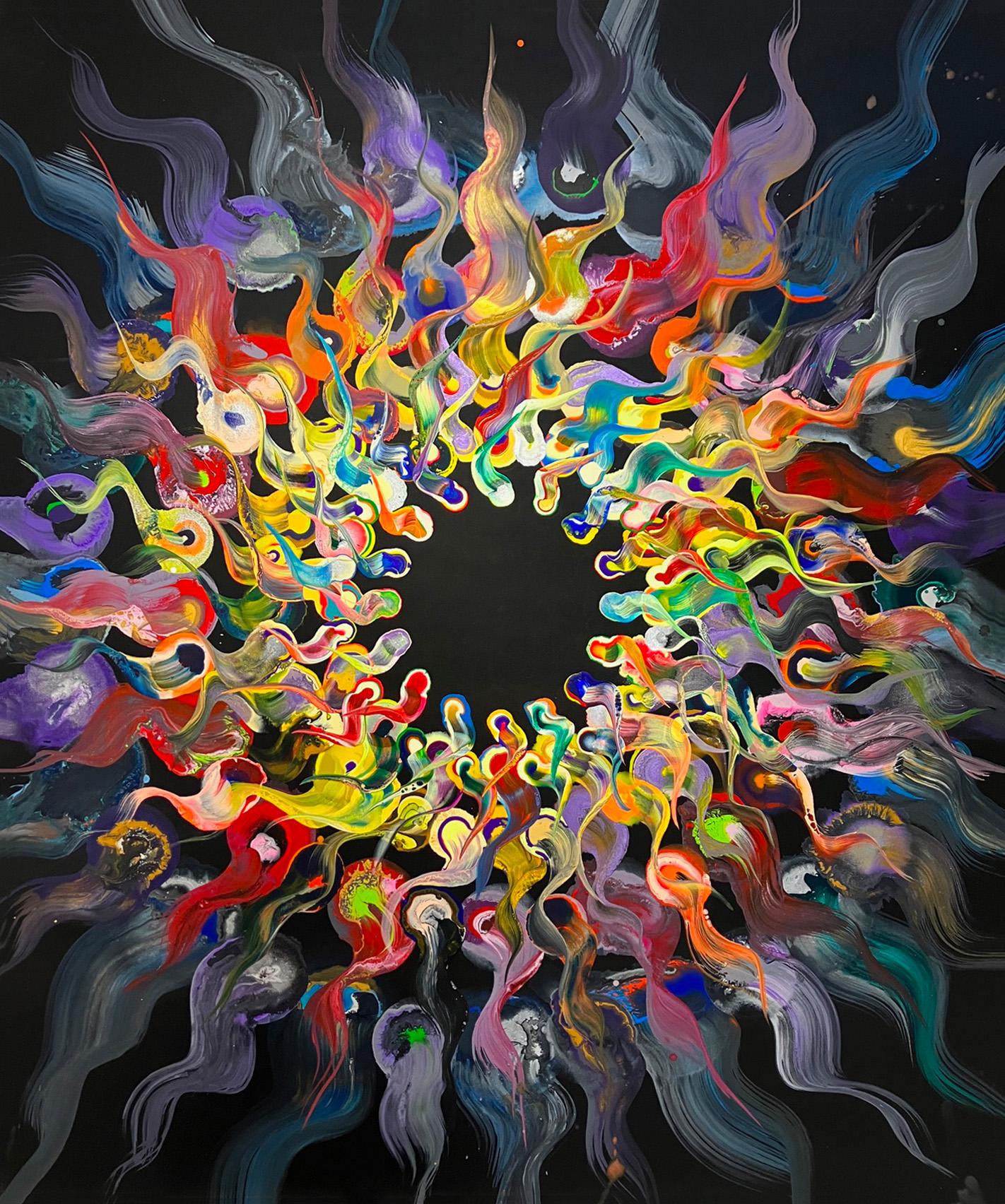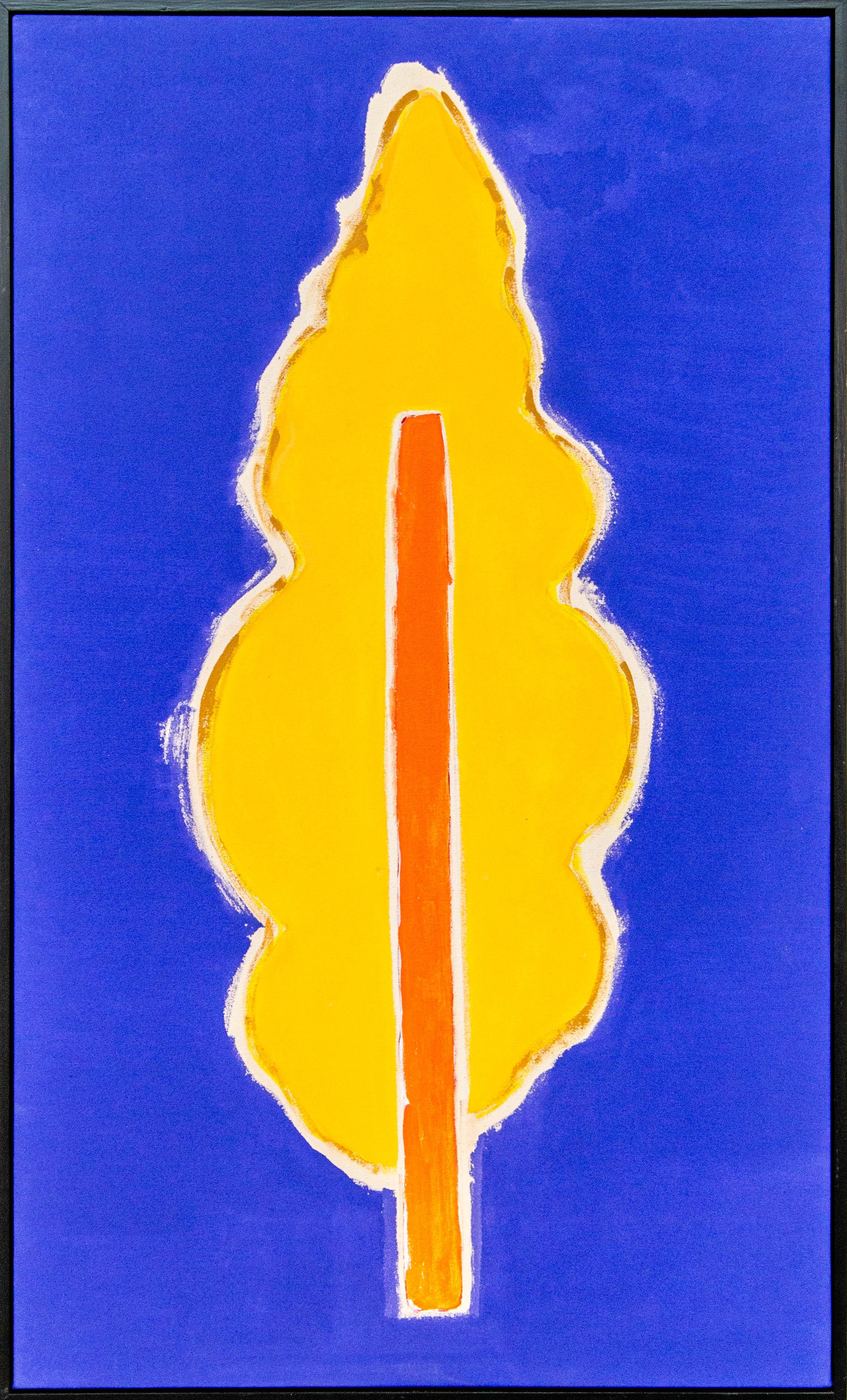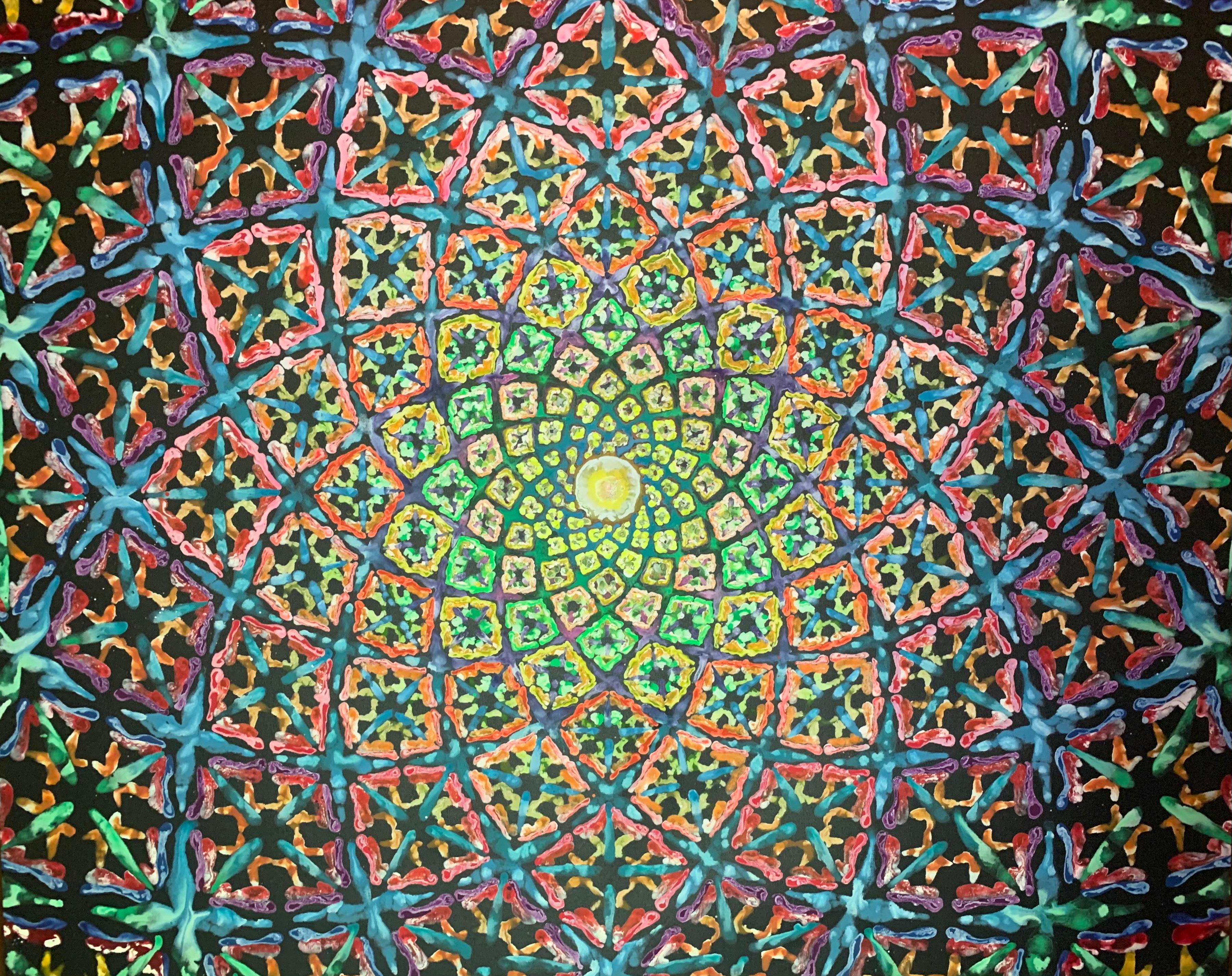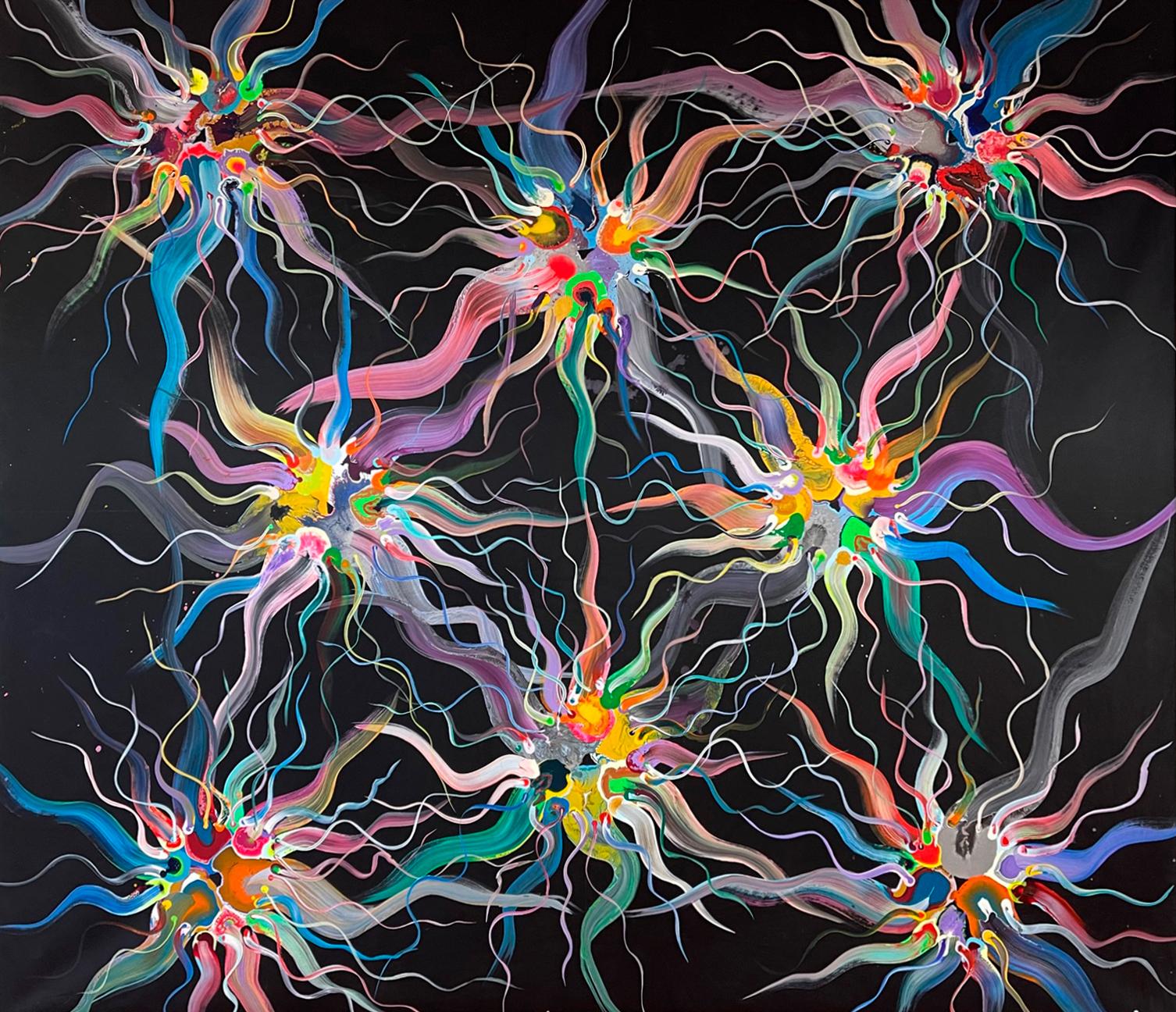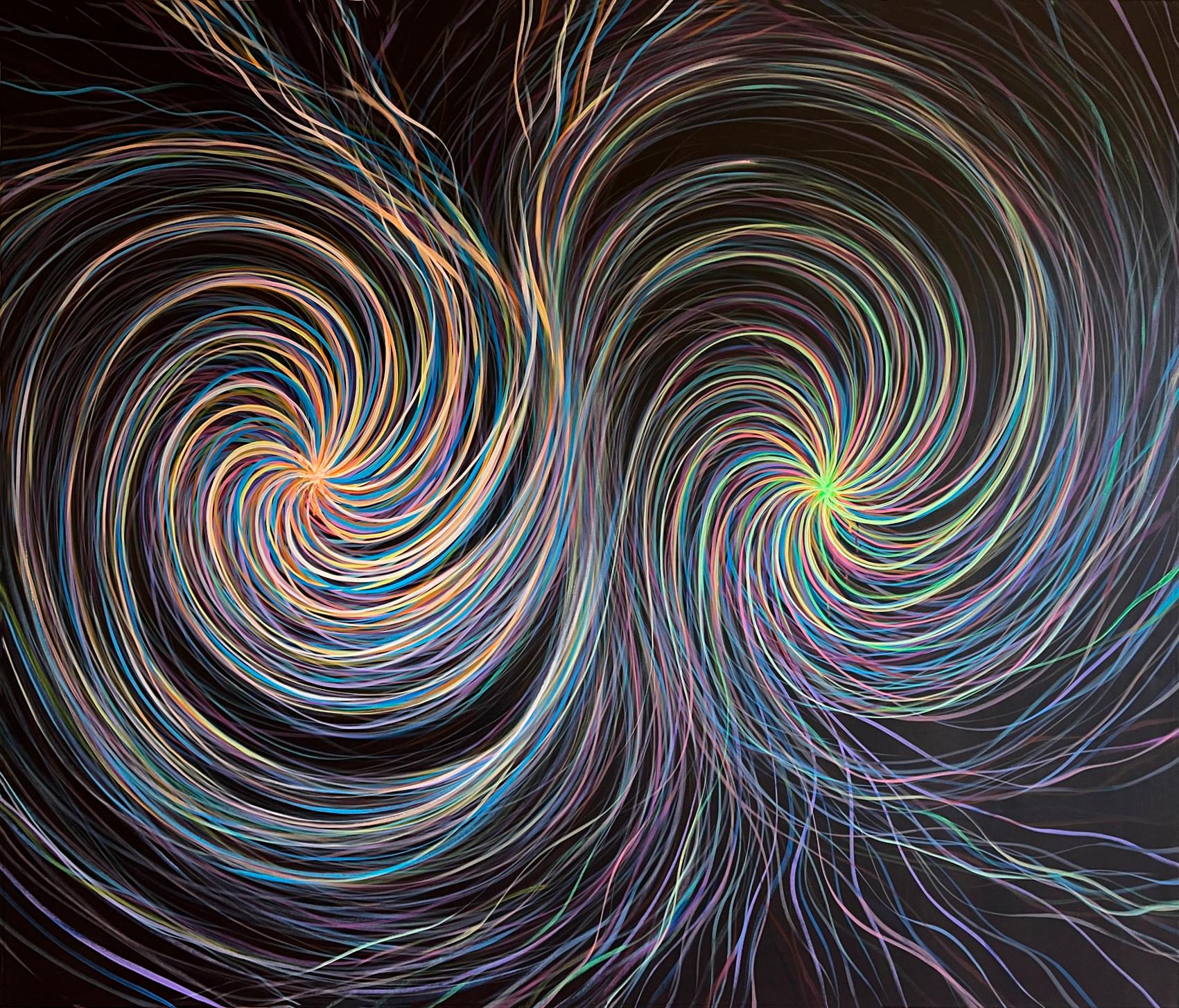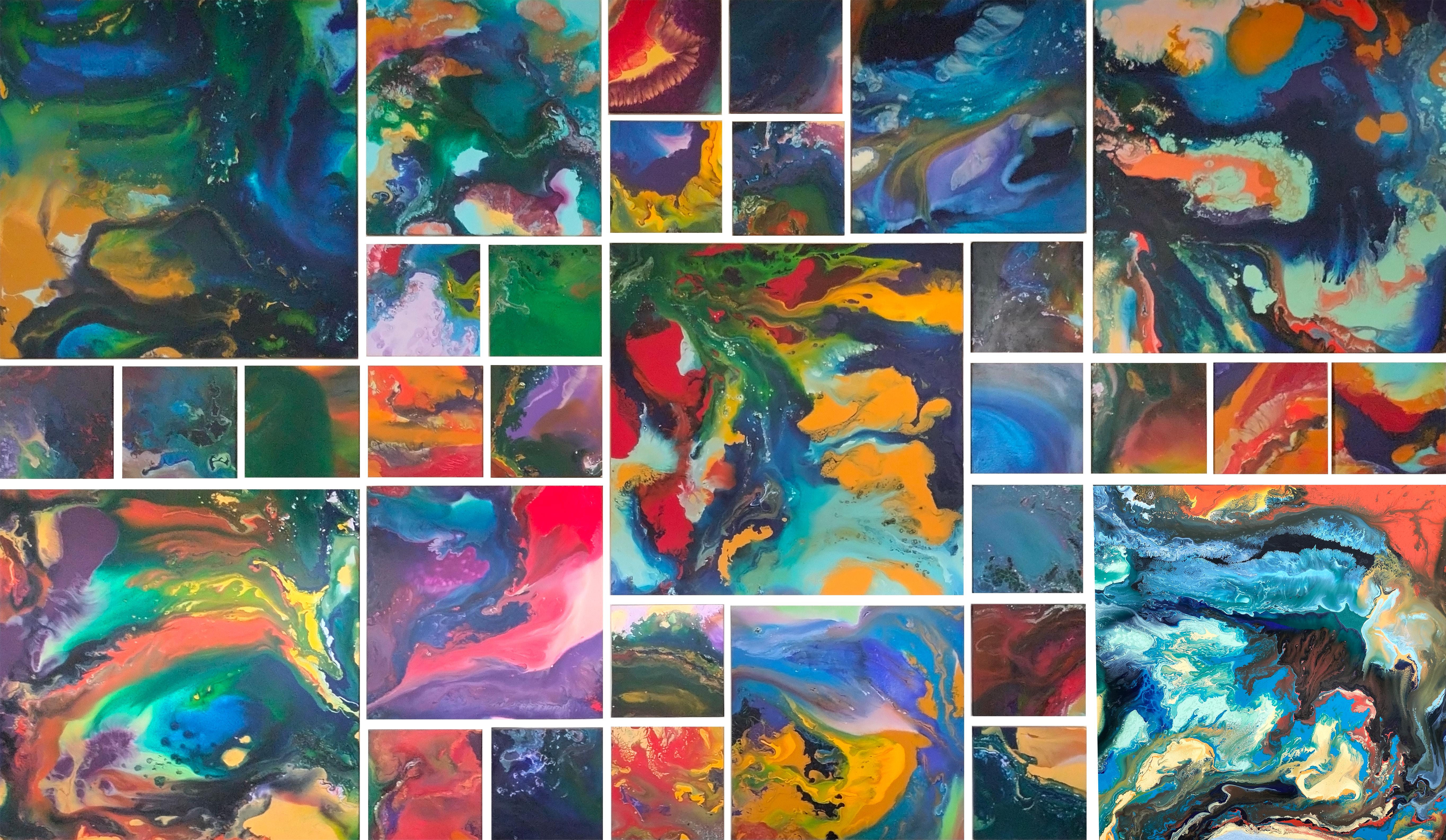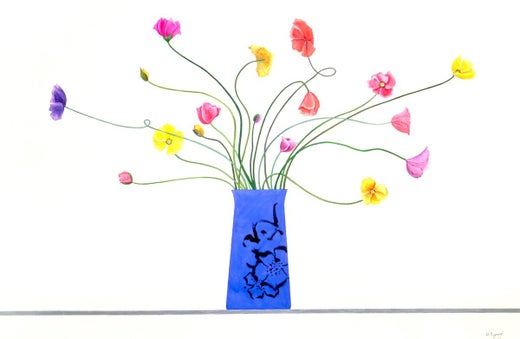Items Similar to "The Boat" Abstract Patterns, Composition of Abstract Shapes
Want more images or videos?
Request additional images or videos from the seller
1 of 9
Ed Baynard"The Boat" Abstract Patterns, Composition of Abstract Shapes2005
2005
About the Item
Ed Baynard
The Boat, 2005
Signed, titled, and dated on the overlap
Watercolor on canvas
24 x 36 inches
- Creator:Ed Baynard (1940, American)
- Creation Year:2005
- Dimensions:Height: 24 in (60.96 cm)Width: 36 in (91.44 cm)
- More Editions & Sizes:Unique workPrice: $8,000
- Medium:
- Movement & Style:
- Period:
- Framing:Framing Options Available
- Condition:
- Gallery Location:New York, NY
- Reference Number:1stDibs: LU1841214463482
Ed Baynard
Ed Baynard was born on December 14, 1940, in Washington, D.C. He grew up in an environment that fostered his love for art, eventually leading him to become a prominent figure in the American art scene. Baynard was largely self-taught, drawing inspiration from various art movements and styles throughout his career. Ed Baynard's career is marked by his elegant approach to traditional subjects and his ability to infuse them with modern sensibility. His work in poster art has allowed him to reach a wider audience, making his art accessible and appreciated by many. Through his paintings, prints, and posters, Baynard has left a lasting impact on the art world, celebrated for his clarity, precision, and timeless beauty.
About the Seller
5.0
Platinum Seller
These expertly vetted sellers are 1stDibs' most experienced sellers and are rated highest by our customers.
Established in 2021
1stDibs seller since 2022
63 sales on 1stDibs
Typical response time: <1 hour
- ShippingRetrieving quote...Ships From: New York, NY
- Return PolicyA return for this item may be initiated within 3 days of delivery.
More From This SellerView All
- "Abstract (with Two White Vases) " Ed Baynard, Still Life CompositionBy Ed BaynardLocated in New York, NYEd Baynard Abstract (with Two White Vases), 2005 Signed, titled, and dated along the verso Acrylic on canvas 48 x 40 inchesCategory
Early 2000s Abstract Abstract Paintings
MaterialsCanvas, Acrylic
- "Candelabra, " Edward Millman, Colorful Abstract Expressionist Still LifeLocated in New York, NYEdward Millman (1907 - 1964) Candelabra, 1962 Signed lower right; titled and dated on the reverse Oil on canvas 41 3/4 x 31 1/2 inches Provenance: The ...Category
1960s Abstract Abstract Paintings
MaterialsCanvas, Oil
- "Nature morte" Bela de Kristo, Mid-century Cubist Still Life Abstract CelloBy Bela De KristoLocated in New York, NYBela de Kristo Nature morte, circa 1956 Signed lower right Oil on board 19 5/8 x 11 3/4 inches Provenance: Alexander Kahan Fine Arts, New York Private ...Category
1950s Cubist Still-life Paintings
MaterialsOil, Board
- "Lexington, " Larry Zox, Abstract Expressionism, Minimalism, Brown ModernismBy Larry ZoxLocated in New York, NYLarry Zox Lexington, 1973 Acrylic on canvas 61 x 49 inches Provenance: Andre Emmerich Gallery, New York Janie C. Lee Gallery, Houston, Texas Private Collection, Greenwood Village, Colorado Exhibited: New York, Andre Emmerich Gallery, Larry Zox: New Paintings, March 10 - 28, 1973. Houston, Texas, Janie C. Lee Gallery, Larry Zox, February - April, 1974. A painter who played an essential role in the Color Field discourse of the 1960s and 1970s, Larry Zox is best known for his intensely and brilliantly colored geometric abstractions, which question and violate symmetry. Zox stated in 1965: “Being contrary is the only way I can get at anything.” To Zox, this position was not necessarily arbitrary, but instead meant “responding to something in an examination of it [such as] using a mechanical format with X number of possibilities." What he sought was to “get at the specific character and quality of each painting in and for itself,” as James Monte stated in his introductory essay in the catalogue for Zox’s 1973–74 solo exhibition at the Whitney Museum of American Art. Zox also at times used a freer, more intuitive method, while maintaining coloristic autonomy, which became increasingly important to him in his later career. Zox began to receive attention in the 1960s, when he was included in several groundbreaking exhibitions of Color Field and Minimalist art, including Shape and Structure (1965), organized by Henry Geldzahler and Frank Stella for Tibor de Nagy, New York, and Systemic Painting (1966), organized by Lawrence Alloway for the Guggenheim Museum. In 1973–74, the Whitney’s solo exhibition of Zox’s work gave recognition to his significance in the art scene of the preceding decade. In the following year, he was represented in the inaugural exhibition of the Hirshhorn Museum, which acquired fourteen of his works. Zox was born in Des Moines, Iowa. He attended the University of Oklahoma and Drake University, and then studied under George Grosz at the Des Moines Art Center. In 1958, Zox moved to New York, joining the downtown art scene. His studio on 20th Street became a gathering place for artists, jazz musicians, bikers, and boxers. He occasionally sparred with visiting fighters. He later established a studio in East Hampton, a former black smithy used previously by Jackson Pollock. Zox’s earliest works were collages consisting of pieces of painted paper stapled onto sheets of plywood. He then produced paintings that were illusions of collages, including both torn- and trued-edged forms, to which he added a wide range of strong hues that created ambiguous surfaces. Next, he omitted the collage aspect of his work and applied flat color areas to create more complete statements of pure color and shape. He then replaced these torn and expressive edges with clean and impersonal lines that would define his work for the next decade. From 1962 to 1965, he produced his Rotation series, at first creating plywood and Plexiglas reliefs, which turned squares into dynamic polygons. He used these shapes in his paintings as well, employing white as a foil between colors to produce negative spaces that suggest that the colored shapes had only been cut out and laid down instead of painted. The New York Times noted in 1964: “The artist is hip, cool, adventurous, not content to stay with the mere exercise of sensibility that one sees in smaller works.” In 1965, he began the Scissors Jack series, in which he arranged opposing triangular shapes with inverted Vs of bare canvas at their centers that threaten to split their compositions apart. In several works from this series, Zox was inspired by ancient Chinese water vessels...Category
1970s Abstract Expressionist Abstract Paintings
MaterialsCanvas, Acrylic
- "Night Road" Gerome Kamrowski, Abstract Expressionism Surrealism, Purple ImpastoBy Gerome KamrowskiLocated in New York, NYGerome Kamrowski (1914 - 2004) Night Road, 1966 Acrylic on canvas 58 1/4 x 96 1/4 inches Signed and dated Provenance: The Artist The Kamrowski Estate (by family descent in 2004) Exhibited: The Detroit Institute of Arts, Detroit, Michigan, 56th Exhibition for Michigan Artists, November 18 - December 31, 1966, no. 32, illustrated (Night Road was the winner of the "Phyllis King Weiner Memorial Prize" at this exhibition). Ann Arbor, University of Michigan Museum of Art, Gerome Kamrowski: A Retrospective Exhibition, August 30 - October 16, 1983, no. 70, illustrated. Tarpon Springs, Florida, Leepa-Rattner Museum of Art, St. Petersburg College, Gerome Kamrowski: An American Surrealist, September 8 - October 27, 2002, no. 23. Chelsea, Michigan, River Gallery, Gerome Kamrowski: 1914-2004, A Memorial Retrospective, October 30 - December 5, 2004. Gerome Kamrowski was born in Warren, Minnesota, on January 19, 1914. In 1932 he enrolled in the Saint Paul School of Art (now Minnesota Museum of American Art - MMAA), where he studied with Leroy Turner, and Cameron Booth. Both Turner and Booth had been students of Hans Hofmann, and were also associated with the Abstraction-Création group in Paris. It was from these peers that Kamrowski was introduced to a "kind of expressionist cubism." In 1933 Kamrowski was awarded a scholarship to the Art Students League, where he would study in New York under Hans Hofmann. Unfortunately, immigration problems had prevented Hofmann from assuming his post. Nevertheless, Kamrowski decided to remain in New York for a short time, to attend classes taught by George Grosz. After a few weeks, he returned to St. Paul, and found a position in the mural painting division of the Minnesota FAP/WPA (Works Progress Administration). In 1936 he contributed “Synthetic Cubist Style” frescoes in the Northrup Auditorium of the University of Minnesota. In 1937 Kamrowski went to Chicago to study under László Moholy-Nagy and Alexander Archipenko at the New Bauhaus (now Illinois Institute of Technology's Institute of Design). There he was exposed to new and interesting ideas regarding the role of nature in art and the "geometric basis of natural form". In 1938 Kamrowski received a Guggenheim fellowship to attend Hans Hofmann's summer school in Provincetown, Massachusetts. He then relocated to New York where he met William Baziotes. Together they shared a fascination in Surrealist automatic writing, and both artists explored its possibilities in their paintings. Kamrowski was particularly drawn to Surrealism's fundamental appeal of intuition over intellect. He was interested seeking a process that "binds all things together...a kind of cosmic rhythm". Throughout the late 1930s and early 1940s while living in New York, Kamrowski became an integral part of the emerging surrealists. In 1942, the artist Roberto Matta attempted to form a group of artists to investigate new applications for Surrealist methods. He invited Kamrowski, along with William Baziotes, Jackson Pollock, Peter Busa...Category
1960s Abstract Expressionist Abstract Paintings
MaterialsCanvas, Acrylic
- "Untitled, " Knox Martin, Abstract ExpressionismBy Knox MartinLocated in New York, NYKnox Martin (1923 - 2022) Untitled Signed to lower edge Acrylic and gold foil on canvas 9 x 9 inches Knox Martin (1923-2022) was an esteemed New York School painter. Knox Martin was born in 1923 in Barranquilla, Colombia. He was the son of the aviator, painter, and poet William Knox Martin, the first man to fly over the Andes Mountains. After serving in World War II, Knox Martin attended the Art Students League of New York on the G.I. Bill from 1946-1950, where he studied with Harry Sternberg, Vaclav Vytlacil, Will Barnet, and Morris Kantor. In 1954, Knox Martin's friend Franz Kline placed a painting of his in the Stable Gallery Annual. Charles Egan of the renowned Charles Egan Gallery saw Knox Martin's painting at the Stable Gallery and asked Martin to show his work in a one-man show for the tenth anniversary of the Egan Gallery. Since then, Knox Martin was a celebrated painter, sculptor and muralist. Knox Martin had an extensive exhibition record and his work is in museum, corporate and private collections worldwide. His two best-known murals in NYC are Venus and Woman with Bicycle...Category
Late 20th Century Abstract Abstract Paintings
MaterialsGold, Foil
You May Also Like
- Lotus. Abstract painting, Acrylic paint on canvasBy Yunior MarinoLocated in Miami Beach, FLLotus, 2023 by Yunior Manino Acrylic paint on canvas Mounted on stretcher Signed back by the artist _______ Yunior Marino completed his studies at the Instituto Superior de Artes ...Category
2010s Abstract Still-life Paintings
MaterialsCanvas, Acrylic
- Guest - bright, colorful, minimalist, abstracted tree, acrylic on canvasBy Pat ServiceLocated in Bloomfield, ONPat Service has an affinity for nature. Growing up on the West Coast the Canadian artist was surrounded by trees, rocky beaches and the sea. This is one of a series of playful pieces that ascribes personalities to different trees. Painted in bright yellow with an orange trunk...Category
2010s Abstract Abstract Paintings
MaterialsCanvas, Acrylic
- Mantra, Mandala. Abstract painting, Acrylic paint on canvasBy Yunior MarinoLocated in Miami Beach, FLMantra (Mandala), 2017 by Yunior Manino Acrylic paint on canvas Image size: 135 cm H X 170 cm W Unframed Signed by artist _______ Yunior Marino comp...Category
2010s Abstract Still-life Paintings
MaterialsCanvas, Acrylic
- Waves and Particles. Abstract painting, Acrylic paint on canvasBy Yunior MarinoLocated in Miami Beach, FLWaves and Particles, 2021 by Yunior Manino Acrylic paint on canvas Image size: 170 cm H X 192 cm W Unframed Signed by artist _______ Yunior Marino c...Category
2010s Abstract Still-life Paintings
MaterialsCanvas, Acrylic, Paint
- Mantra. Abstract painting, Acrylic paint on canvasBy Yunior MarinoLocated in Miami Beach, FLMantra, 2017 by Yunior Manino Acrylic paint on canvas Image size: 180 cm H X 220 cm W Unframed Signed by artist _______ Yunior Marino completed his ...Category
2010s Abstract Still-life Paintings
MaterialsCanvas, Acrylic
- Agua en el humo y cielo en el fuego, Polyptych. Wall painting InstallationBy Yunior MarinoLocated in Miami Beach, FLAgua en el humo y cielo en el fuego (Polyptych), 2022 by Yunior Manino Acrylic paint on canvas Total installation size (32 pieces): 246 cm H X 425 cm ...Category
2010s Abstract Still-life Paintings
MaterialsCanvas, Acrylic, Paint
Recently Viewed
View AllMore Ways To Browse
Acrylic Boat
Rosa Artist
Abstract Painting Signed Original Japanese
French Wall Hanging Painted
Large Painting Australia
Large Scale Italian Painting
Pair Of Abstract Paintings Framed
Framed Triptych
Full Circle Modern
Lee Brown
Seeing Eye
Used Sound Panels
Abstract Male Painting
Collage Art 3d
Pink 2003
Spring Texas
Abstract Painting Color Field Yellow
Bright Bit
